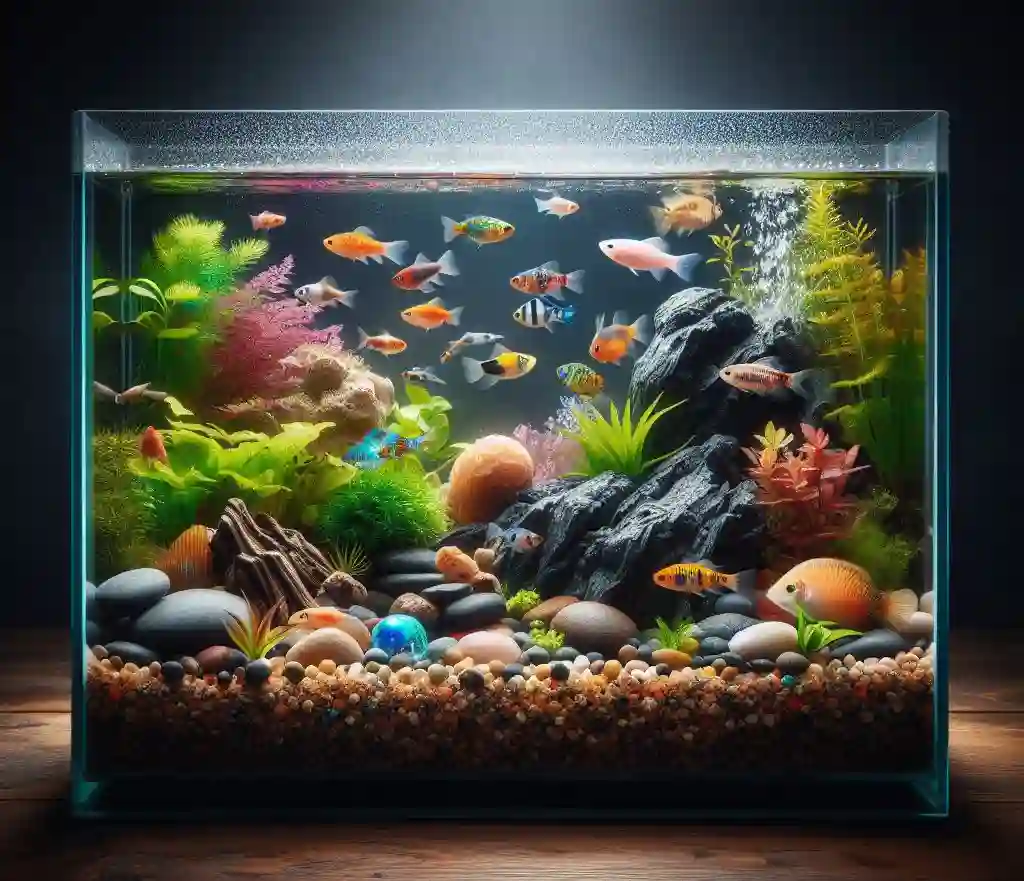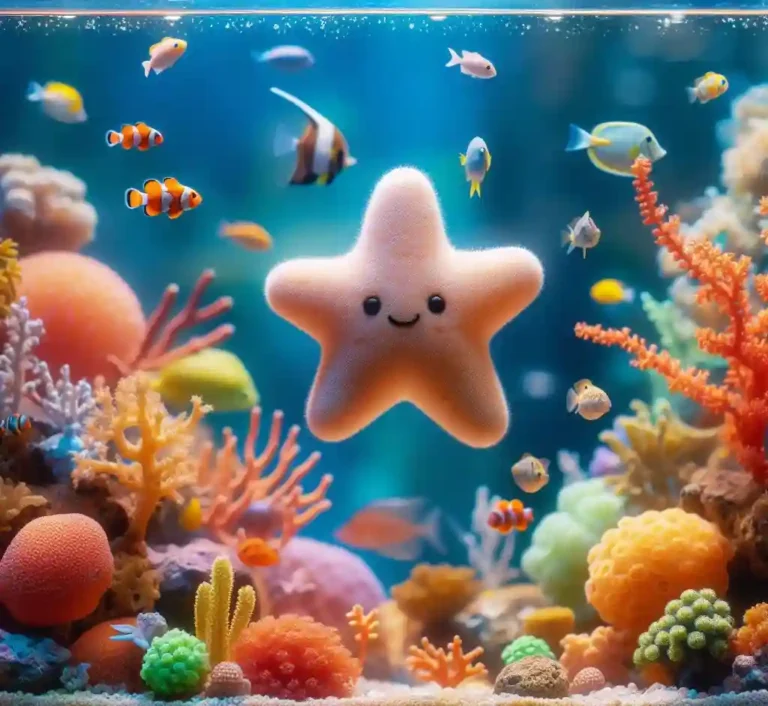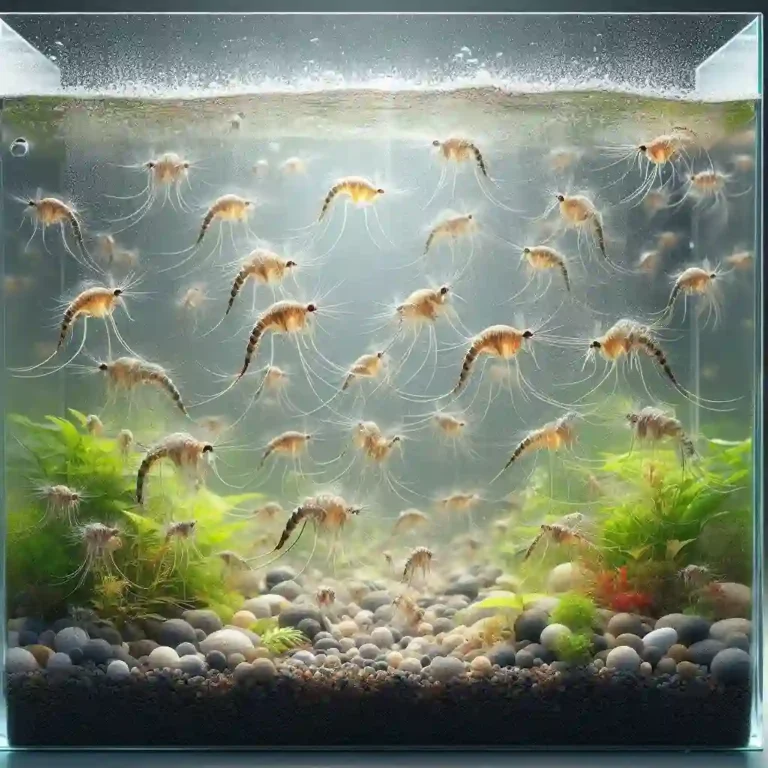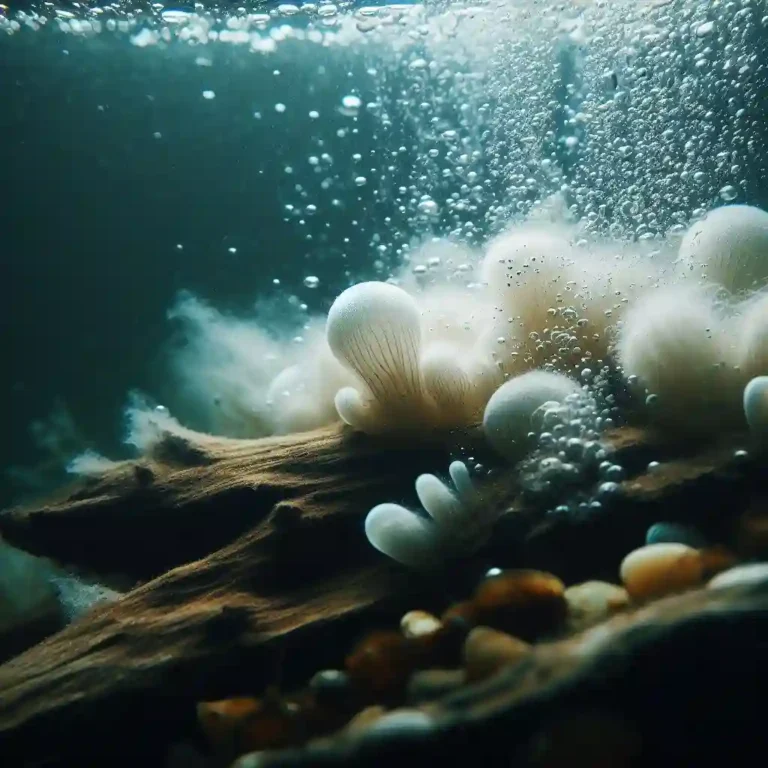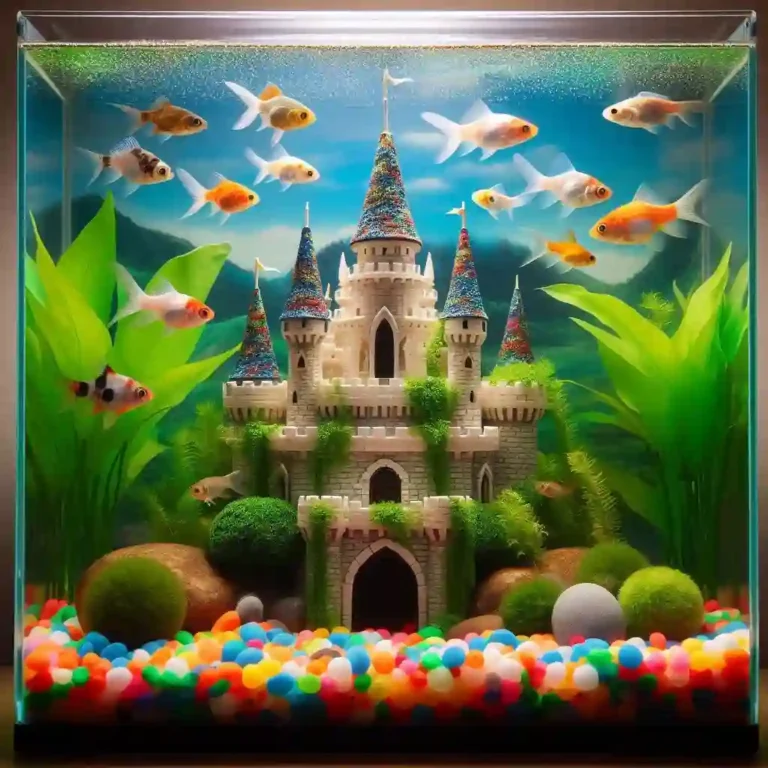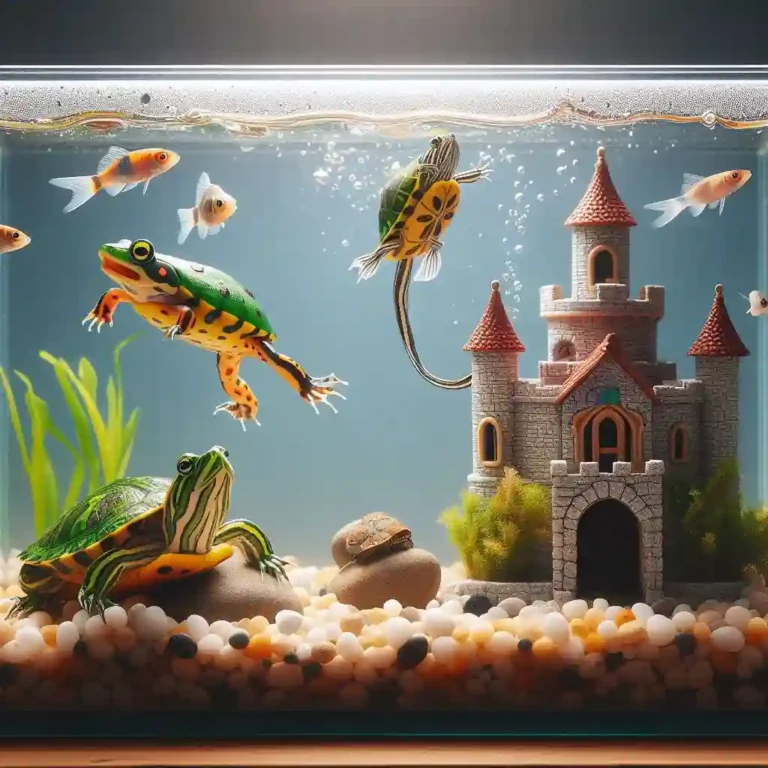How to Reduce Water Hardness in Aquarium: A Step-by-Step Guide
How to Reduce Water Hardness in Aquarium: Maintaining a healthy aquarium requires more than just providing a comfortable environment – it also demands attention to water quality. High water hardness can lead to skin irritation, respiratory issues, and more.
In this guide, we’ll show you how to reduce water hardness in your aquarium, ensuring a healthy and thriving environment for your fish.
How to Reduce Water Hardness in Aquarium: A Quick Guide
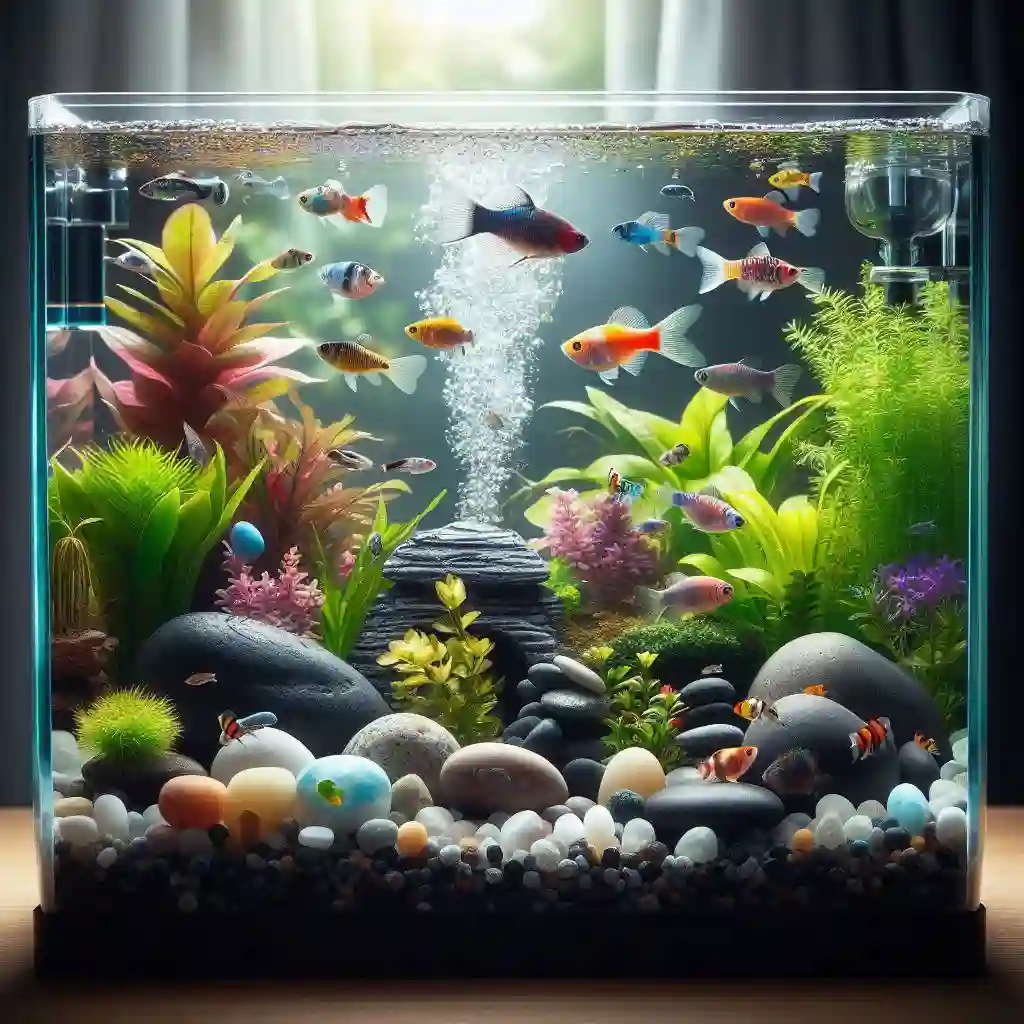
Here’s a quick guide on how to reduce water hardness in an aquarium:
Step 1: Test Your Water
Use a water test kit to check the pH, ammonia, nitrite, and nitrate levels in your aquarium. This will help you determine the level of water hardness and identify any potential issues.
Step 2: Use a Water Softener
Consider using a water softener specifically designed for aquariums. These devices remove minerals such as calcium and magnesium from the water, reducing water hardness.
Step 3: Use Reverse Osmosis
Use a reverse osmosis system to remove impurities and minerals from the water. This can be a more expensive option, but it’s effective at reducing water hardness.
Step 4: Use Activated Carbon
Activated carbon can help remove impurities and minerals from the water, reducing water hardness. You can add activated carbon to your filter or use it as a standalone filter.
Step 5: Use Distilled Water
Consider using distilled water instead of tap water to reduce water hardness. Distilled water is free from minerals and impurities, making it a great option for aquariums.
Step 6: Monitor Your Water
Regularly monitor your aquarium water to ensure it remains within a healthy range. Check the pH, ammonia, nitrite, and nitrate levels regularly to ensure your fish are healthy and thriving.
Tips and Precautions
- Always follow the manufacturer’s instructions when using any water treatment products.
- Regularly clean and maintain your filter to ensure optimal performance.
- Avoid sudden changes in water temperature or chemistry, as this can cause stress to your fish.
- Monitor your fish for signs of stress, disease, or injury, and take action if necessary.
Understanding Water Hardness: What You Need to Know
Water hardness refers to the concentration of dissolved minerals, primarily calcium and magnesium, in the water. These minerals can come from various sources, including:
- Natural sources, such as rocks and soil
- Human activities, such as industrial processes and agricultural runoff
- Aquarium equipment, such as filters and heaters
Water hardness is typically measured in degrees of hardness (dH) or parts per million (ppm). The most common units of measurement are:
- dH: 1 dH is equivalent to 17.1 ppm
- ppm: 1 ppm is equivalent to 0.058 dH
Here’s a rough guide to help you understand water hardness levels:
- Soft water: 0-50 ppm (0-2.9 dH)
- Moderately hard water: 50-100 ppm (2.9-5.8 dH)
- Hard water: 100-200 ppm (5.8-11.6 dH)
- Very hard water: 200-400 ppm (11.6-23.2 dH)
Why Reduce Water Hardness in Your Aquarium?
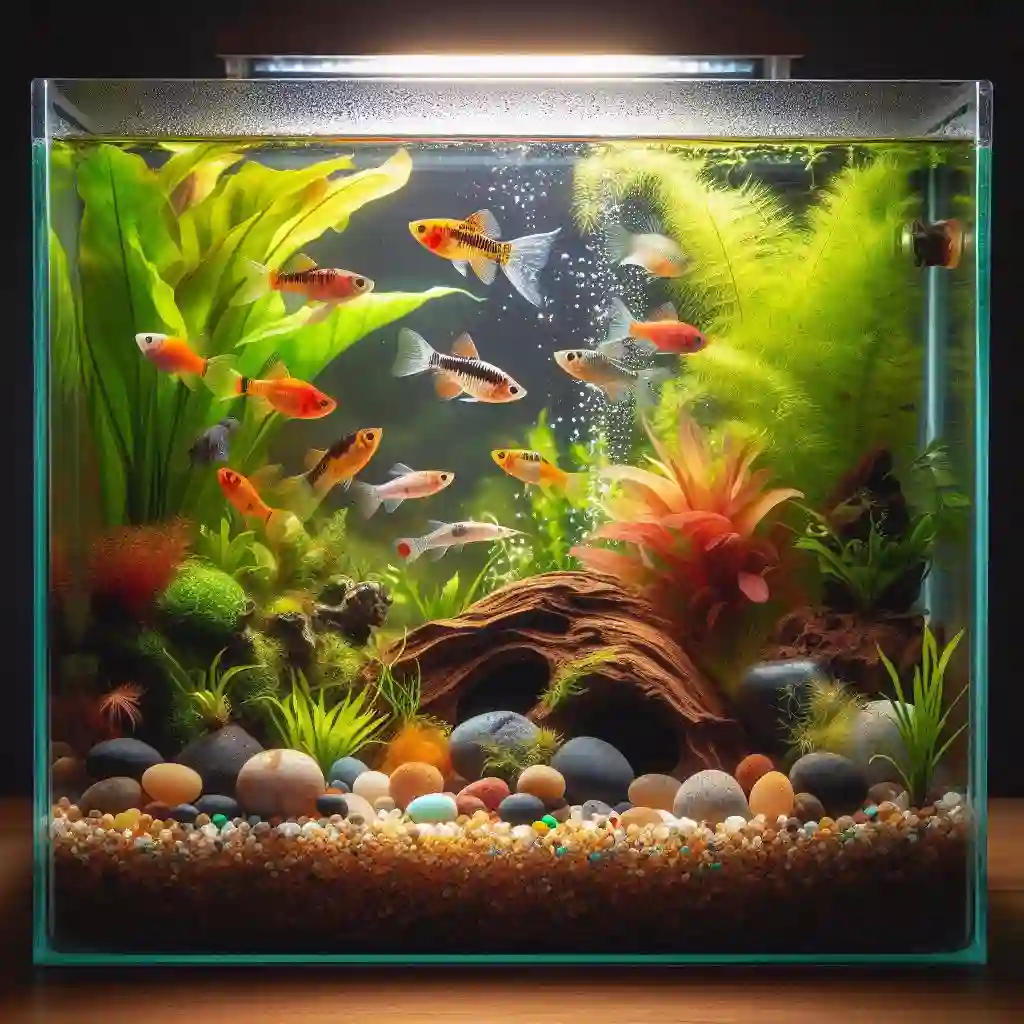
Here are some compelling reasons why:
- Improved Fish Health: High water hardness can cause skin irritation, respiratory issues, and other health problems in fish. By reducing water hardness, you can create a more comfortable environment for your fish to thrive.
- Better Water Chemistry: Water hardness can affect the pH and alkalinity levels in your aquarium, which can impact the overall water chemistry. By reducing water hardness, you can create a more stable and balanced environment.
- Reduced Equipment Maintenance: High water hardness can affect the performance of aquarium equipment, such as filters and heaters. By reducing water hardness, you can reduce the need for frequent equipment maintenance.
- Increased Fish Growth: Fish grow faster and healthier in soft water environments. By reducing water hardness, you can create an environment that promotes healthy growth and development.
- Reduced Algae Growth: Soft water environments tend to have lower algae growth, which can reduce the need for frequent water changes and maintenance.
- Improved Water Clarity: Reduced water hardness can improve water clarity by reducing the amount of suspended particles and debris.
- Better Plant Growth: Soft water environments can promote healthy plant growth, which can add aesthetic appeal and create a more natural environment.
Testing for Water Hardness: A Simple Guide
Method 1: Water Test Kits
You can purchase water test kits specifically designed for testing water hardness. These kits usually include reagents that change color in response to the presence of certain minerals, such as calcium and magnesium.
Method 2: pH Meter
You can also use a pH meter to test for water hardness. pH meters can measure the pH level of your aquarium water, which can give you an idea of the water hardness. However, pH meters are not as accurate as water test kits specifically designed for testing water hardness.
Method 3: Titration
Titration is a more advanced method that involves adding a known amount of a reagent to the aquarium water and measuring the volume of the reagent required to reach a specific pH level. This method requires some expertise and specialized equipment.
The Best Methods for Reducing Water Hardness
Reducing water hardness in your aquarium requires a combination of the right methods and techniques. Here are some of the best methods for reducing water hardness:
Method 1: Water Changes
Regular water changes are one of the most effective ways to reduce water hardness. By replacing a portion of the aquarium water with fresh, dechlorinated water, you can reduce the overall hardness of the water.
Method 2: Water Softeners
Water softeners are devices that remove minerals such as calcium and magnesium from the water, reducing its hardness. There are different types of water softeners available, including salt-based and salt-free options.
Method 3: Reverse Osmosis Systems
Reverse osmosis systems use a semi-permeable membrane to remove impurities and minerals from the water, including calcium and magnesium. This method is effective for reducing water hardness, but can be expensive and require regular maintenance.
Method 4: Activated Carbon
Activated carbon can help remove impurities and minerals from the water, including calcium and magnesium. This method is effective for reducing water hardness, but may not be as effective as other methods.
Method 5: Distilled Water
Distilled water is water that has been purified through distillation, which involves boiling the water and then collecting the condensed steam. This method is effective for reducing water hardness, but may not be suitable for all aquariums.
Method 6: Water Conditioners
Water conditioners are products that remove impurities and minerals from the water, including calcium and magnesium. This method is effective for reducing water hardness, but may not be as effective as other methods.
Water Changes: The Simplest Way to Reduce Water Hardness
One of the simplest and most effective ways to reduce water hardness in your aquarium is to perform regular water changes. Water changes involve replacing a portion of the aquarium water with fresh, dechlorinated water. This method is easy to implement and can be done on a regular basis to maintain a healthy and thriving aquarium.
Benefits of Water Changes
Performing regular water changes has several benefits, including:
- Reduces water hardness: Water changes help to remove excess minerals and impurities from the water, reducing water hardness.
- Improves water quality: Water changes help to remove waste products and excess food from the water, improving water quality.
- Reduces algae growth: Water changes help to reduce algae growth by removing excess nutrients from the water.
- Improves fish health: Regular water changes can help to improve fish health by reducing stress and improving water quality.
How to Perform a Water Change
Performing a water change is a simple process that can be done on a regular basis. Here’s a step-by-step guide:
- Turn off the aquarium lights and equipment.
- Siphon out a portion of the aquarium water, removing any debris or waste.
- Replace the removed water with fresh, dechlorinated water.
- Monitor the aquarium water temperature and make any necessary adjustments.
- Repeat the process as needed, depending on the size of your aquarium and the number of fish.
Using Water Softeners in Your Aquarium
Water softeners are devices that remove minerals such as calcium and magnesium from the water, reducing its hardness. In an aquarium, water softeners can be used to reduce water hardness and create a healthier environment for your fish.
Types of Water Softeners
There are several types of water softeners available for aquarium use, including:
- Salt-based water softeners: These softeners use salt to remove minerals from the water.
- Salt-free water softeners: These softeners use a different technology to remove minerals from the water.
- Reverse osmosis systems: These systems use a semi-permeable membrane to remove impurities from the water.
How to Choose a Water Softener
When choosing a water softener for your aquarium, consider the following factors:
- Type of water softener: Salt-free
- Size of the softener: Make sure it’s large enough for your aquarium.
- Flow rate: Make sure the softener can handle the flow rate of your aquarium.
- Maintenance: Consider how easy the softener is to maintain and clean.
Maintaining a Healthy Aquarium After Reducing Water Hardness
Here are some tips to help you maintain a healthy aquarium after reducing water hardness:
Monitor Water Quality
Regularly test your aquarium water to monitor changes in water hardness and make any necessary adjustments. Use a water test kit to check the pH, ammonia, nitrite, and nitrate levels.
Maintain Proper Water Temperature
Ensure your aquarium is at the recommended water temperature for your fish. Most fish thrive in temperatures between 72°F to 82°F (22°C to 28°C).
Provide Adequate Filtration
Ensure your aquarium has a proper filtration system to remove waste products and excess nutrients. Regularly clean and maintain your filter to ensure optimal performance.
Feed Your Fish Properly
Feed your fish a balanced diet that meets their nutritional needs. Avoid overfeeding, as this can lead to water quality issues.
Monitor Fish Health
Regularly inspect your fish for signs of stress, disease, or injury. Consult a veterinarian or experienced aquarist if you notice any unusual behavior or physical changes.
Perform Regular Water Changes
Regularly change a portion of the aquarium water to maintain water quality and reduce the buildup of waste products.
Maintain Proper Aquarium Hygiene
Regularly clean your aquarium and its accessories to prevent the buildup of bacteria and algae.
Monitor Algae Growth
Regularly inspect your aquarium for signs of algae growth and take steps to control it. Excessive algae growth can indicate poor water quality or inadequate filtration.
Conclusion: Reducing Water Hardness for a Thriving Aquarium
Reducing water hardness is a crucial step in maintaining a healthy and thriving aquarium. By understanding the importance of water hardness, testing for water hardness, and implementing effective methods for reducing water hardness, you can create a comfortable and healthy environment for your fish.
By following the tips and guidelines outlined in this blog post, you can create a thriving aquarium environment that is conducive to the health and well-being of your fish. Remember to always prioritize the well-being of your fish and take steps to ensure their health and happiness.
FAQs
Q: Why is it important to reduce water hardness?
A: Reducing water hardness is important because it can help to create a healthier environment for your fish. Hard water can be stressful for fish and can lead to a range of health problems. By reducing water hardness, you can create a more comfortable and healthy environment for your fish.
Q: How do I reduce water hardness?
A: There are several ways to reduce water hardness, including using water softeners, reverse osmosis systems, and activated carbon filters. You can also try using distilled water or rainwater to reduce water hardness.
Q: What are the benefits of reducing water hardness?
A: Reducing water hardness can have a range of benefits for your fish, including improved health, reduced stress, and improved water quality. It can also help to reduce algae growth and improve the overall appearance of your aquarium.
Q: How often should I test my aquarium water for water hardness?
A: It’s a good idea to test your aquarium water regularly for water hardness, especially if you’re new to aquarium keeping. You can use a water test kit to check the pH, ammonia, nitrite, and nitrate levels in your aquarium.
Q: Can I use tap water in my aquarium?
A: It’s generally not recommended to use tap water in your aquarium, as it can contain high levels of minerals and other impurities that can harm your fish. Instead, consider using distilled water or rainwater to reduce water hardness.
Q: How do I know if my aquarium water is too hard?
A: If your aquarium water is too hard, you may notice a range of symptoms, including skin irritation, respiratory issues, and more. You can also use a water test kit to check the pH, ammonia, nitrite, and nitrate levels in your aquarium.
Q: Can I use a water conditioner to reduce water hardness?
A: Yes, you can use a water conditioner to reduce water hardness. Water conditioners can help to remove impurities and minerals from the water, making it safer for your fish.

Hello, I’m Aria Cooper, the heart and soul behind Swimmy Buddies. As a devoted fish aficionado, I share my aquatic adventures and expertise to inspire your own underwater explorations. 🐠🌊

